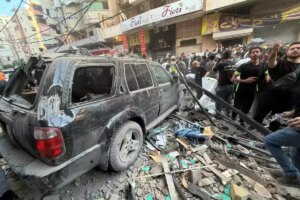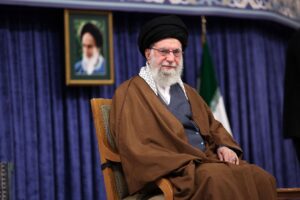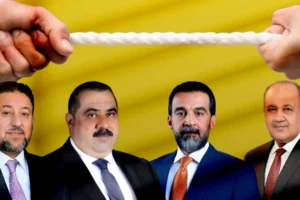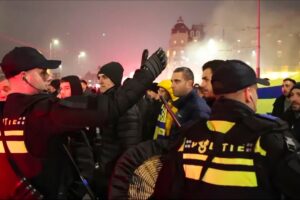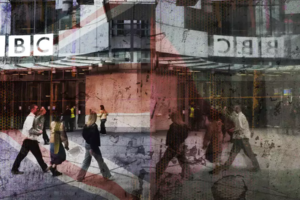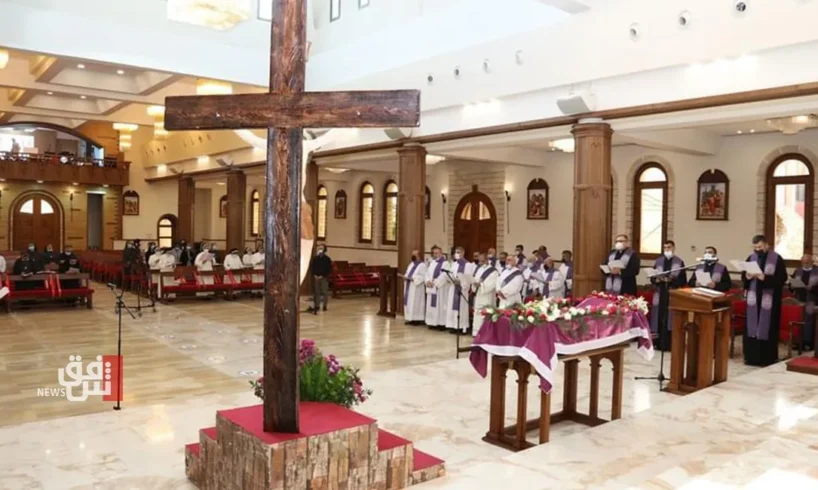
Shafaq News
For nearly two millennia, Iraq’s Christians have been a
thread in Mesopotamia’s history. From the monasteries of Nineveh to the
churches of Baghdad and the mountain villages of the north, they preserved
traditions that predate Islam. Their language, art, and liturgy carry the
heritage of vanished civilizations.
Today, their story is one of endurance—a people striving to
remain visible in a land where faith and history are entwined, yet survival
grows ever more uncertain.
Vanishing Act
Before the 2003 war, Iraq’s Christians—mostly Chaldean
Catholics, Assyrians, and Syriac Orthodox—were estimated at between 1.2 and 1.5
million, concentrated in Baghdad, Mosul, Basra, and northern towns across the
Nineveh Plain. Over two decades, their numbers fell to under 250,000, according
to church and humanitarian estimates.
The decline began after the US invasion, when instability
unleashed a wave of sectarian killings, kidnappings, and intimidation. Churches
were bombed, priests assassinated, and families forced to abandon their homes.
By 2014, the community was already hollowed out. When ISIS
seized Mosul, Christians faced an ultimatum: convert, pay a special tax, or
risk death. Homes were marked with the Arabic letter “N” for
Nasrani—Christian—signaling targets for confiscation. Thousands fled overnight
to the Kurdistan Region, leaving behind churches, schools, manuscripts, and
ancestral homes.
In Qaraqosh, Iraq’s largest Christian town, entire
neighborhoods were emptied. ISIS looted homes and burned churches, turning the
city’s Al-Tahira Cathedral into a shooting range. The Monastery of Mar Behnam,
dating to the fourth century, was destroyed, highlighting the attempt to erase
the community’s identity.
During the ISIS years, around 120,000 Christians found
refuge in Erbil and surrounding towns, where church institutions provided
temporary housing, schooling, and aid. Others crossed into Jordan, Lebanon, and
Turkiye, or sought asylum in Europe, Australia, and North America.
When Mosul and Nineveh were liberated in 2017, hopes of
return emerged—but few returned. Reconstruction funds were limited; many
properties were destroyed or seized; and competing security forces controlled
different areas, creating uncertainty for returnees.
As of 2025, humanitarian agencies estimate that fewer than
half of those displaced have returned, with most relying on local protection
units or church-organized initiatives.
Fragmented Voices
Christians in Iraq are represented by several small parties,
but their influence has waned alongside their numbers. The Assyrian Democratic
Movement (Zowaa), one of the oldest, has long championed minority rights and
autonomy for the Nineveh Plain. The Chaldean Syriac Assyrian Popular Council
and other smaller groups operate mostly in the Kurdistan Region.
In recent years, the Babylon Movement has emerged as a
powerful but controversial actor. While it occupies minority quota seats in
parliament, many Christian leaders and civil society groups view it as
unrepresentative, accusing it of exploiting the Christian identity for
political leverage.
Political divisions have undercut the community’s ability to
advocate collectively, leaving it split between secular and church-aligned
factions, and between supporters of Erbil and Baghdad.
Although Iraq’s constitution guarantees religious freedom,
Christians continue to face social and institutional barriers. Land disputes
persist, particularly in mixed areas where Christian properties were seized
during or after the ISIS war. Bureaucratic hurdles slow the restitution of
homes and churches, while limited state support for rebuilding leaves many
relying on international charities.
In urban centers, Christian families report fewer overt
attacks but describe subtle exclusion from public employment and political
networks. Religious representation in local government remains minimal, and
many Christian-run schools and hospitals struggle to secure licenses and
funding.
Dollars Hold Ground
The exodus has created a vast global diaspora that now plays
a crucial role in sustaining the community inside Iraq. From Detroit to Sydney
and Stockholm, Iraqi Christian expatriates fund reconstruction projects and
scholarships for displaced youth. Remittances help families rebuild homes, open
small businesses, and maintain cultural institutions.
Yet the diaspora’s influence is double-edged. While
financial support is vital, it also cements permanent migration patterns. Many
families now maintain dual homes—relatives abroad provide money and advocacy,
while those inside Iraq hold on to ancestral land as a symbolic claim.
Hope In Rubble
Iraq’s Christian communities are slowly reclaiming their
presence from the shadow of war. In Qaraqosh, Al-Tahira Cathedral welcomed
Christmas Mass in 2021 for the first time since the conflict, filling its pews
with thousands of worshippers.
That same year, Pope Francis’ visit drew international
attention to their struggles, offering a rare moment of hope and renewed
interest in preserving a heritage that has endured for centuries.
Priests and volunteers have worked tirelessly to restore
ancient manuscripts, reopen schools, and repair churches damaged or destroyed
in the fighting. Yet countless sites remain in ruins. The Monastery of Mar
Behnam, partially rebuilt, stands as both a symbol of survival and a silent
testament to what was lost.
Faith alone, however, cannot secure their future. Clergy and
experts stress three urgent needs: security, economic opportunity, and the
restitution of property. Without progress on these fronts, the demographic
decline is likely to continue. Local councils and church groups have proposed
special governance for the Nineveh Plain, placing administration in civilian
hands and security under integrated local forces rather than militias.
These initiatives, however, face stiff resistance in Baghdad
and Erbil, where authorities remain wary of new autonomy models.
For Iraq’s Christians, the risk is clear: their communities
could survive only in murals, manuscripts, and the memories of those who have
fled.
Written and edited by Shafaq News staff.

